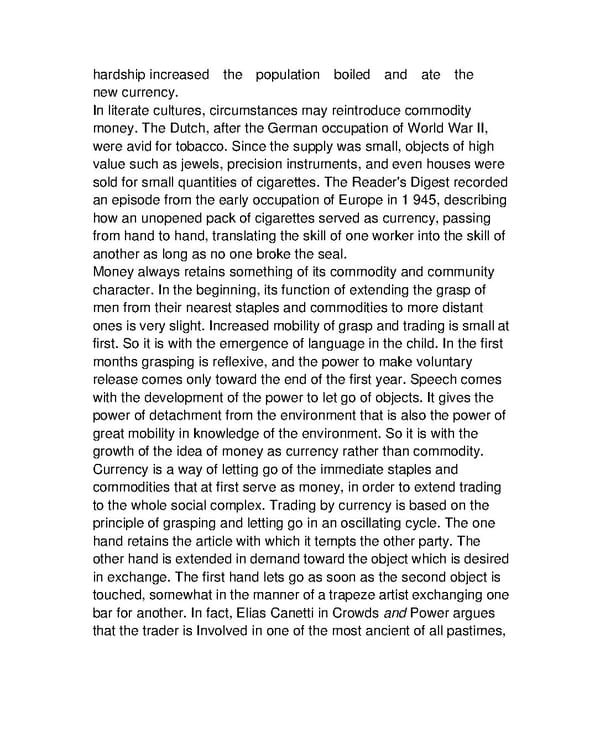hardship increased the population boiled and ate the new currency. In literate cultures, circumstances may reintroduce commodity money. The Dutch, after the German occupation of World War II, were avid for tobacco. Since the supply was small, objects of high value such as jewels, precision instruments, and even houses were sold for small quantities of cigarettes. The Reader's Digest recorded an episode from the early occupation of Europe in 1 945, describing how an unopened pack of cigarettes served as currency, passing from hand to hand, translating the skill of one worker into the skill of another as long as no one broke the seal. Money always retains something of its commodity and community character. In the beginning, its function of extending the grasp of men from their nearest staples and commodities to more distant ones is very slight. Increased mobility of grasp and trading is small at first. So it is with the emergence of language in the child. In the first months grasping is reflexive, and the power to make voluntary release comes only toward the end of the first year. Speech comes with the development of the power to let go of objects. It gives the power of detachment from the environment that is also the power of great mobility in knowledge of the environment. So it is with the growth of the idea of money as currency rather than commodity. Currency is a way of letting go of the immediate staples and commodities that at first serve as money, in order to extend trading to the whole social complex. Trading by currency is based on the principle of grasping and letting go in an oscillating cycle. The one hand retains the article with which it tempts the other party. The other hand is extended in demand toward the object which is desired in exchange. The first hand lets go as soon as the second object is touched, somewhat in the manner of a trapeze artist exchanging one bar for another. In fact, Elias Canetti in Crowds and Power argues that the trader is Involved in one of the most ancient of all pastimes,
 Understanding Media by Marshall McLuhan Page 147 Page 149
Understanding Media by Marshall McLuhan Page 147 Page 149